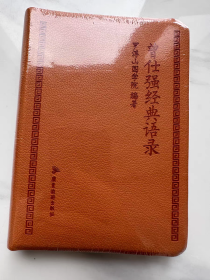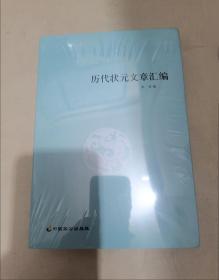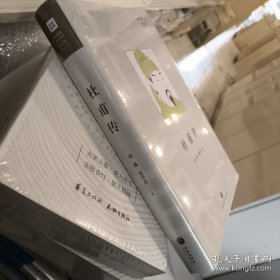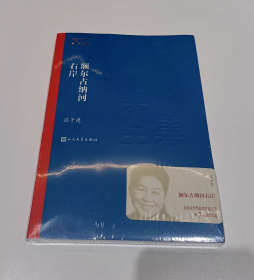
【正版保证】9787510050466 固态磁性导论 莫翰 著 世图科技 Magnetism in the Solid State:An Introduction 电磁学/电动力学 高校研究生教材
9787510050466
¥ 32 全新
库存5件
北京大兴
认证卖家担保交易快速发货售后保障
作者(奥)莫翰
出版社世界图书出版公司
ISBN9787510050466
出版时间2015-01
装帧平装
开本24开
货号552710118703
上书时间2023-10-22
- 店主推荐
- 最新上架
商品详情
- 品相描述:全新
- 商品描述
- 定价:39.00元 内容简介 The present greatly enlarged version was mainly written duringa sabbatical at the university of Uppsala during 2000. The aim ofthe book is to present a largely phenomenological introduction tothe field of solid state magnetism at a relatively elementarylevel. The two basic concepts of magnetism in solids namely thelocalized and the delocalized de*ion are presented as theextreme approaches. The true nature of magnetism lies, as often inlife, somewhere in between, sometimes showing a tendency towardsthe more localized side, sometimes tending to the delocalized side.It is perhaps this mixing of concepts which makes magnetism appearcomplicated and difficult. Another source of confusion is thedifferent language used by theoreticians and experimentalists. Ihave tried very hard to clarify these rather more semantic problemsand to use a uniform nomenclature throughout the book. It is mybelief and my experience that the approach presented here providesa useful introduction not only for the physicist, but also for theinterested reader coming from fields like chenustry, electricalengineering or even geo-sciences. The mathematical concepts usedare kept rather simple and hardly ever go beyond an undergraduatecourse in mathematics for physicists, chemists or engineering.Since the book emerged from a lecture course I have given at ViennaUniversity of Technology for the last 15 years, the chapters in thebook are not completely self-contained.The first-time reader isthus advised to read the chapters in the sequence that they appearin the book. It is my sincere hope that after having read this bookthe reader will agree that for once the Encyclopedia Brittanica isin error when it states Few subjects in, science are m,oredifficult to un,derstan,than magn.etism, (Encyclopedia Brittanica,15th edition 1989). The present book does not attempt to cover the whole field ofsolid state magnetism, but tries to provide an overview byselecting special topics. The idea is to create an interest in thisfascinating field in which quantum mechanics, thermodynamics andcomputer simulations join forces to explain "Magnetism in the SolidState". 目 录 1. A Historical Introduction 2. Consequences ofFermi Statistics 2.1 Quantum Statistics of Fermions 2.2 Free Energy of the Fermi Gas 3. Paramagnetism 4. Energy Bands in the Crystal 5. Experimental Basis of Ferromagnetism 5.1 Nickel Alloys 5.2 Iron Alloys 5.3 Palladium Alloys 5.4 Iron-Nickel Alloys 5.5 Effects of Strong Magnetic Fields 5.6 Effects of High Pressure 5.7 Effects of Finite Temperature 5.8 Susceptibility above Tc 5.8.1 Susceptibility of “Classical Spins” 5.9 Critical. Exponents 5.10 Neutron Diffraction 5.11 Further Experimental Methods 6. Weiss Molecular Field Model 6.1 Rhodes-Wohlfarth Plot 7. Heisenberg Model 7.1 Magnon Operators 7.2 Heisenberg Hamiltonian in Magnon Variables 7.3 Magnon Dispersion Relation 7.3.1 Specific Heat of Magnons 7.3.2 Ordering Temperature 7.4 Approximations for the Heisenberg Model 7.4.1 Ising Model 7.4.2 XY Model 7.4.3 Mean Field Solutions of the Heisenberg Model 8. Itinerant Electrons at O K 8.1 Pauli Susceptibility of the Itinerant Electrons 8.2 Susceptibility of the Interacting Itinerant Electrons 8.3 Non linear Effects 8.4 Effects of IIigh Fields at O K 8.4.1 Non-magnetic Limit 8.4.2 Strong Ferromagnets 8.4.3 Weak Ferromagnets 8.4.4 bcc Iron and hcp Cobalt 8.4.5 Extremely High Fields 8.4.6 Metamagnetism 8.5 Susceptibility of Paramagnetic Alloys 9. Band Gap Theory of Strong Ferromagnetism 9.1 Magnetism of Alloys 10. Magnetism and the Crystal Structure——Covalent Magnetism 10.1 Crystal Structure of Mn,Fe,Co,and Ni 10.2 Covalent Magnetism 10.3 Covalent Polarization 11. Magnetic Impurities in an Electron Gas 11.1 Impurity Potential in the Jellium 11.2 Strong Perturbations in the Jellium 11.3 Layer and Line Defects 11.4 Magnetic Impurities and Oscillations of theMagnetization 12. Itinerant Electrons at T〉O: A Historical Survey 12.1 Excitations at Low Temperatures 12.1.1 Strongly Ferromagnetic Systems 12.1.2 Weakly Ferromagnetic Systems 12.2 Stoner Theory for a Rectangular Band 12.3 Weak Excitations with ζ〈〈1 13. Hubbard Model 13.1 Beyond Hartree-Fock 14. Landau Theory for the Stoner Model 14.1 General Considerations 14.2 Application to the Stoner Model 15. Coupling Between Itinerant and Localized Moments 16. Origin of the Molecular Field 16.1 Heitler-London Theory for the Exchange Field 16.1.1 Magnetism of a Spin Cluster 16.1.2 Spinwaves for Localized Electrons 17. Exchange and Correlation in Metals 17.1 Free Electron Gas 17.2 Tightly Bound Electrons 18. Spin Fluctuations 18.1 Fluctuations of a Thermodynamical Variable 18.2 Fluctuations of the Magnetic Moment 18.3 Specific Heat of the Spin Fluctuations 18.4 Magneto-Volume Coupling 18.5 Applications of the Spin Fluctuation Model 18.6 Comparing the Spin-Fluctuation and the Stoner-Model 19. Single Particle Excitations Versus Spin Waves 20. Landau-Ginzburg Model for Spin Fluctuations 21. Conclusion and Lookout A. Appendices A. Convexity Property of the Free Energy B. Derivation of the Coefficient a in (3.17) C. Quenching of the Orbital Momentum D. Properties of “Classical” Spins E. Derivation of the Constant c in (8.24) F. Ornstein-Zernicke Extension G. Bogoliubov-Peierls-Feynman Inequality H. The Factor 2 in Equation (7.27) I. Hund‘s Rules J. Polynomial Coefficients in (18.12) K. Conversion Between Magnetic Units References Index '
— 没有更多了 —






















以下为对购买帮助不大的评价